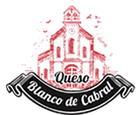Brie goat cheese
Soft goat cheese with a unique scent. It’s a real gourmet cheese.
Goat cheese history
Goat cheese has been elaborated for thousand ofyears, and it was probably one of the first dairy products; it is an excellent and tasteful food that has been with us since Old Times. Nomad shepherds earn their living breeding their goat herds.
The first goat cheeses were made 7000 years BC, when prehistoric man started his sedentarization.
In the Middle Ages, goat cheeses were used as exchange currency. Thanks to the different goat breeds, recipes and maturities, there developed cheeses with specific characteristics.
Nowadays there are many types of goat cheeses in every shapes and flavors. Soft goat cheeses are handmade all over the world.
Benefits and properties of goat cheese
It offers important healthy benefits because of its low fat content and its high contribution of calcium, proteins and vitamins.
Goat cheese is even a better option than cow cheese; besides its exceptional flavor it has important advantages:
- It is easier to digest. Goat milk has less lactose, casein and fatty particles than cow milk, so it is better digested and it is more appropriate for people suffering from intolerance and gastric problems. This also makes it ideal for children.
- High nutrient content. Goat cheese is a good source of vitamin A, vitamin D, vitamin K, riboflavin, potassium, phosphorous, iron, niacin and thiamine. It contains low sodium levels and provides a higher contribution of calcium and proteins than cow cheeses.
- It has a lower content of calories, cholesterol and fat. As goat milk has less fat particles than cow milk, goat cheese is also lighter thus inputing less calories and saturated fats.
Characteristic
Brie goat cheese is a creamy cheese that can improve any plate from “ordinary to gourmet”; it has an extra dimension of flavor that makes it even more superlative.
Goat Brie is even softer than its inspiration, cow milk Brie.
Both rind and inside are bright white.
It has a remarkable thin edible rind. Inside paste is soft and creamy, with a delicate sweet flavor.
Matured with white mold cultures, Brie goat cheese is prepared following the traditional methods, with pasteurized goat milk used with its natural protein and fat content.
The more mature the cheese, more creamy and intense its flavor.
Goat cheeses are of an acid nature and this is due to the fat acids present in goat milk, caproic, caprylic and capric.
They are extremely white cheeses because goat milk, unlike other milks, doesn’t have beta-carotene.
Presentation
- Unit: 250 g.
- Tart: 1 kg.
Gastronomy
Goat Brie cheese goes well with a baguette or salty biscuits, fresh fruit and olives.
It is ideal to be consumed with white wines, especially some crunchy Sauvignon Blanc or Albarino.
To serve Brie correctly, remove it from the fridge and leave it in its package at room temperature for 30 minutes. Serving this cheese at room temperature will emphasize its relatively soft scent.
It can be used to replace Brie cow cheese in every recipe in which Brie is used as an ingredient.
Flavor development
- Beginning of maturity Center: White and firm
- Semi maturity Center: small and firm
- Complete maturity All creamy
Nutricional information
Portion: 30 g. (1 slice)
| Amount per portion | % VD (*) | |
|---|---|---|
| Energetic value | 90 kcal = 378 kj | 5 |
| Carbohidrates | 0,7 g | 0 |
| Proteins | 6 g | 8 |
| Total fat | 7 g | 13 |
| Saturated fat | 4,5 g | 20 |
| Trans fat | 0,00 g | (-) |
| Dietary fiber | 0,00 g | (-) |
| Sodium | 113 mg | 5 |
| Calcium | 177 mg | 18 |
(*) Daily Values for a 2000 Kcal or 8000 kj diet. Daily values can be higher or lower depending on energetic needs.













